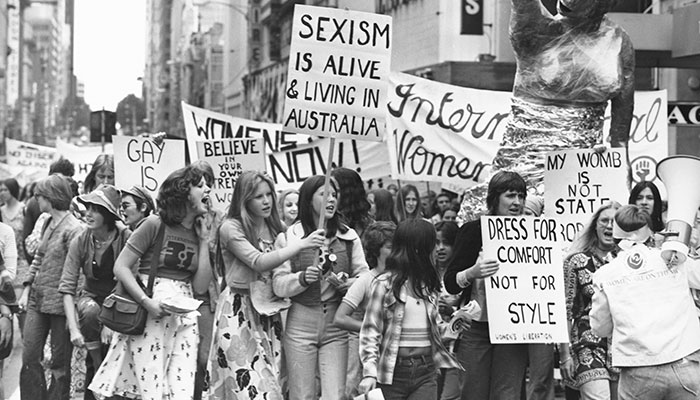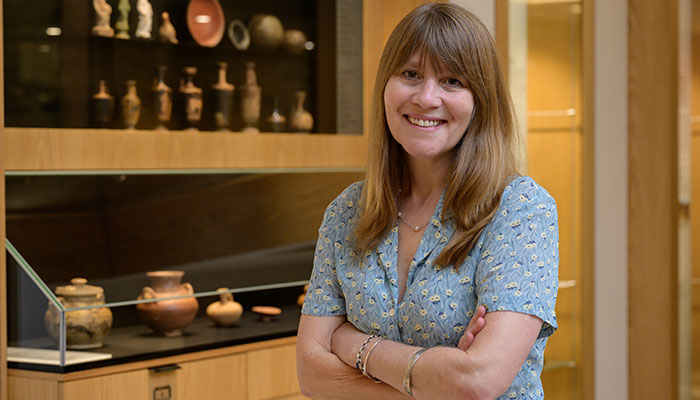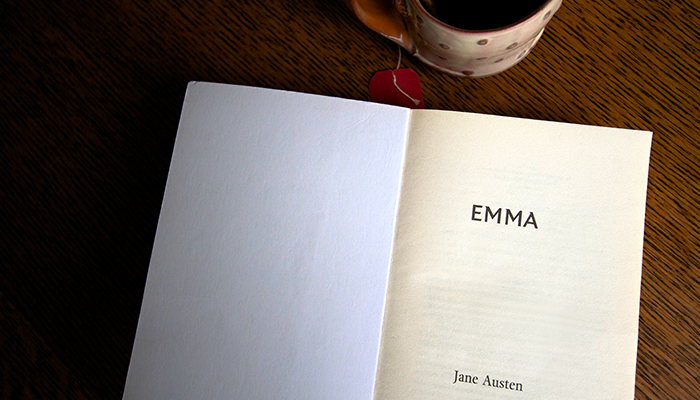Jane Eyre – Charlotte Brontë’s classic Victorian Gothic tale of an orphaned-child-turned-young-woman searching for her place in the world – has never been out of print. It has also been adapted and expanded into countless literary, stage, film, television and other media forms from table-top games to web series.
Penned by the eldest of the famed Brontë sisters, Jane Eyre charts the coming-of-age journey of an orphan from the horrors of a Victorian boarding school to her employment as a governess at Thornfield Hall and her romantic entanglements with her 'master' Mr Rochester.
The love story hits a snag when the ghostly sounds haunting Thornfield turn out to be Rochester’s 'mad' first wife, whom he has kept prisoner in the attic. This melodramatic plot is fleshed out by three main things that keep Jane Eyre current.
The top three reasons why we are still haunted by Jane Eyre
1. The spirited heroine
While feminism was not yet around in the way we think of it today, many women throughout the 19th century wrote passionately about the plight of women in an unjust world that privileged the Rochesters while punishing the Jane Eyres.
Introduced to Jane Eyre as an orphaned child, we quickly fall in love with her fiery spirit, and can’t help but admire her resilience, strong opinions and moral fibre as she faces trial after trial throughout her tumultuous life.
Holding fast to her sense of self amidst a world that attempts to quash her spirit, determined to carve her own path towards independence, Jane is very much a heroine that still speaks to our modern sensibilities. Less so for early Victorian critics: they called our spirited heroine 'ungodly' and 'vulgar-minded'!
2. The romance and passion
Jane Eyre is often cast as the dark, brooding cousin to the earlier Regency-era romances of Jane Austen (think Pride and Prejudice).

Will they, won't they: The heroine and her problematic hero, played by Nelle Lee and Julian Garner in shake & stir's production of the Victorian Gothic classic.
Readers are divided over whether or not Jane’s eventual return to a wounded Rochester (injured in the fire that claimed the life of his 'mad' wife Bertha, whom he had kept locked in an attic – a problematic hero if ever there was one) counts as a happy ending, but the novel’s sustained and simmering will-they-won’t-they tension between the lovers, including a few racy embraces on horseback by moonlight, definitely make for some romantic reading!
This is no surprise: Brontë and her siblings were voracious consumers of the Gothic Romances published at the turn of the century, and particularly the dark and brooding ‘Byronic hero’ modelled after none other than the ‘mad, bad, and dangerous to know’ poet, Lord Byron himself.
But Jane Eyre is no simple love story: Jane’s world is difficult and often dark, but her glimpses of romantic passion keep readers hooked.
3. The haunting Gothic atmosphere
Jane Eyre is a classic among Victorian Gothic novels and helped to shape the genre in a new direction. While there is plenty of the earlier Romantic Gothic to keep us entertained – a seemingly haunted mansion, moonlight and shadowy corridors, gravestones and more than a few suggestions of the supernatural – Brontë’s novel helps usher in a mode of Gothic located less in real ghosts and more in the potential horrors of the mind, whether nightmares, delusion or madness.
Brontë uses the spooky and suspenseful to explore the stormy, inner landscapes of her heroine’s mind and emotions. Brontë’s deep and sophisticated psychological insight, combined with the trappings of Gothic terror, make for reading that is as compelling and emotional as it is entertaining.
New adaptation an enthralling delight
While there are countless adaptations of Jane Eyre, some are more successful than others, often owing to which elements of the novel they choose to foreground, and how well they tap into the key reasons readers still return to the classic novel.
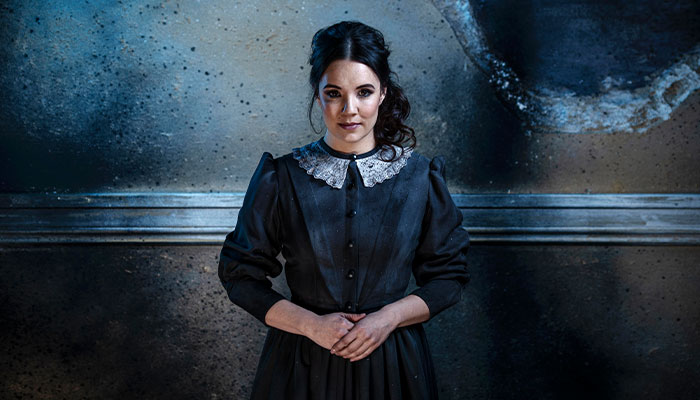
Gravitas: Nelle Lee as Jane Eyre delivers a smart, inspired heroine.
Particularly successful in this respect is Australian theatre company shake & stir’s production, currently touring nationally. Adapted by Nick Skubij and Nelle Lee (who also delivers a mesmerising performance as Jane Eyre), and directed by Michael Futcher, Jane Eyre is a gripping, enthralling delight from start to finish.
Lee delivers a smart, spirited heroine made relatable through the emotional gravitas of her performance. Julian Garner’s similarly masterful portrayal of Rochester amplifies the romance of the story (and perhaps leans towards a positive interpretation of the lovers’ reunion in the final scenes).
However, the success of this adaptation lies mostly in its intelligent, sophisticated handling of the Gothic elements of the novel, which are brought centre stage and amplified to dazzling, haunting effect.
Beautifully paced with dreamlike intensity, this adaptation strikes right at the gothic, emotional heart of Brontë’s novel.
Sound, lighting, music and ingenious set design work in beautiful symbiosis to provide dark and stormy atmosphere, and the powerful use of real fire as a constant refrain underscores the novel’s symbolic tensions between darkness and light – the passions which lurk hidden and repressed within us but threaten to erupt, consume and ultimately destroy us.
However, the Gothic atmosphere in this production is no mean trick designed merely to entertain us. Instead, the Gothic is handled with a Brontëan sophistication to convey some of the story’s most emotional and painful moments.
- Making your child's first 2000 days count
- New guide helps residents convert their high-rise into a vertical village
Most powerful, perhaps, is the choice to represent Jane’s inner thoughts through two uncanny, shadowy figures (played by Jodie le Vesconte and Sarah McLeod, who also play a host of other characters) who alternately pose questions that Jane answers.
This is a clever way to represent consciousness on stage, and the echoing, doubling effect of the multiple voices creates a wonderful sense of inner turmoil threatened by the constant possibility of descent into madness. Often this subconscious takes the form of haunting original music written and performed by McLeod, adding an even deeper layer to the psychology made manifest on stage.
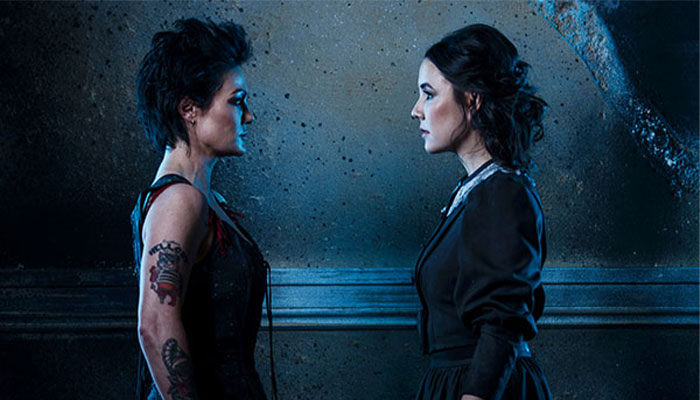
Linked: Sarah McLeod (left) plays both 'mad' wife Bertha and one half of Jane's subconscious.
A particularly powerful moment occurs when the play emphasises the classic interpretation of Jane and the 'mad' wife Bertha as doubles of one another, where Bertha represents the dangers for women consumed by their passions. At one point Jane stands directly beneath Bertha, the two women moving in complete unison, framed by darkness.
In another, a bridal veil, illuminated like a ghost against the shadows, links the two women. The uncanny, unsettling doubling of these women in amplified by the fact that McLeod plays both Bertha and one half of Jane’s subconscious.
Beautifully paced with dreamlike intensity, this adaptation strikes right at the gothic, emotional heart of Brontë’s novel. Intelligent, sensitive and wildly entertaining all at once, this is a must-see production.
The national tour is under way until November, and next in Sydney at Paramatta’s Riverside Theatre from August 31-September 1. See the full list of dates and locations here.
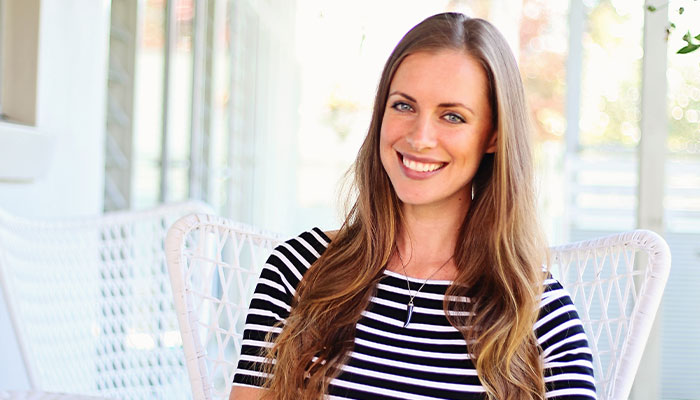
Kirstin Mills (pictured) is Lecturer in Higher Degree Research Programs and Director of the Master of Research in the Faculty of Arts. Her research specialises in 19th-century Gothic and its modern adaptations.

